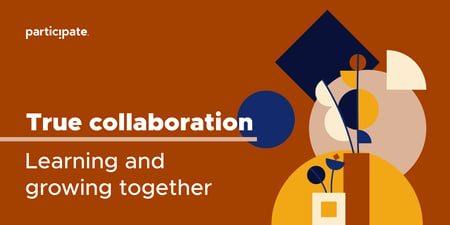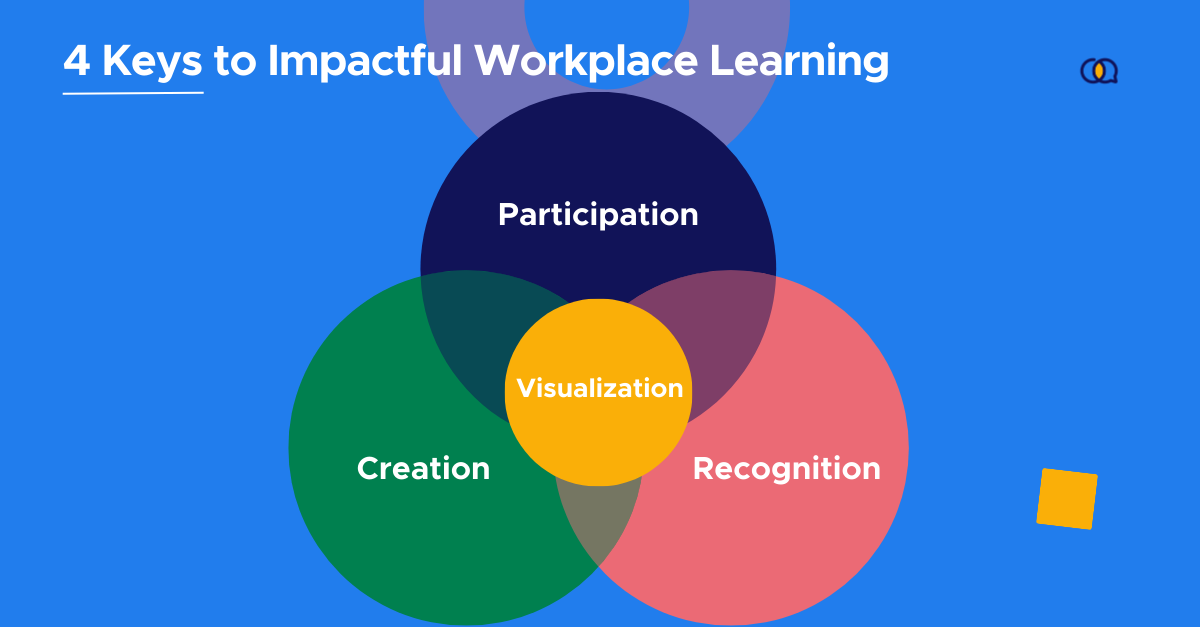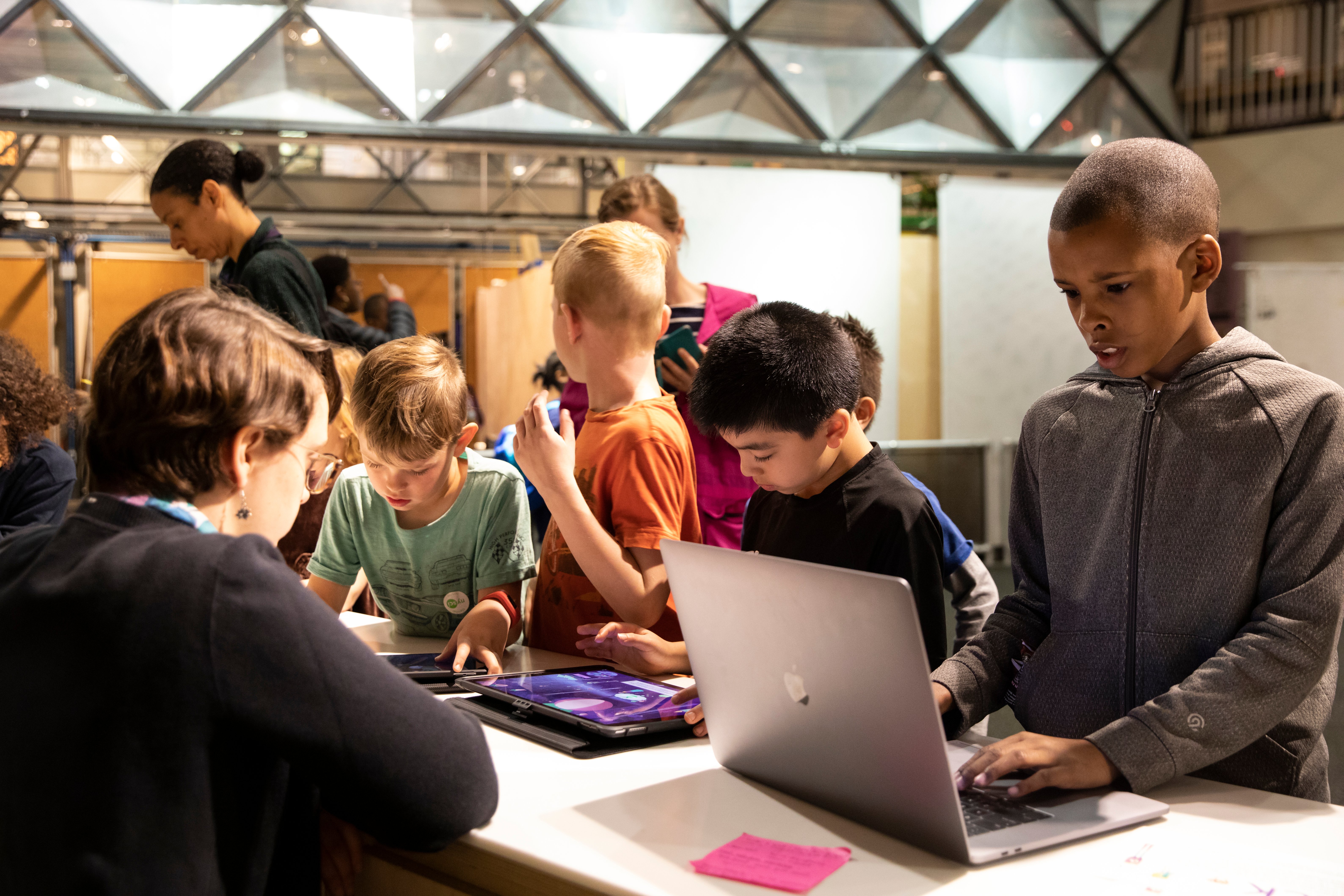From silos to squads: Building an organization focused on equitable collaboration
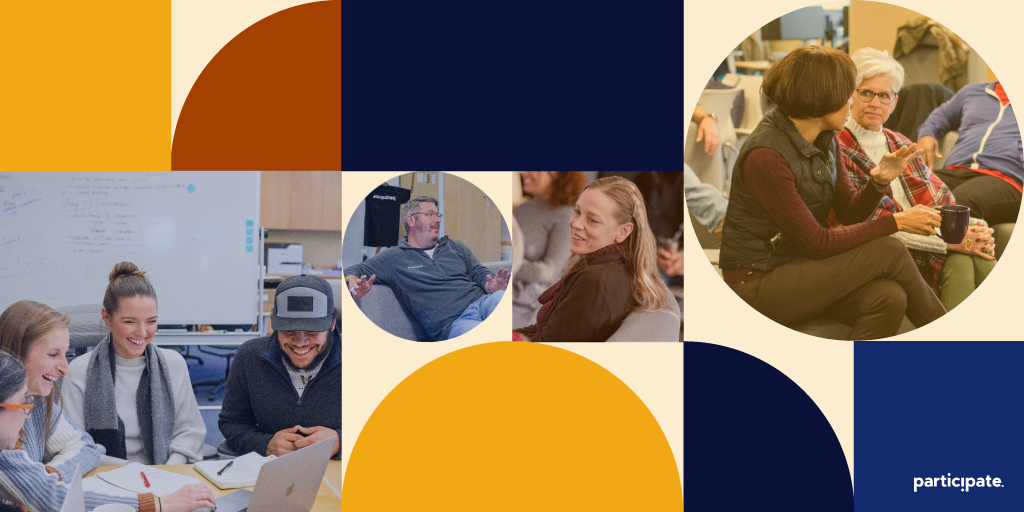
When you jump into a Zoom call with Participate, you’ll notice a couple of things: Julie is likely walking around in her backyard, Molly is quick to be the most stylish person on the call and I’m showing the latest progression of my quarantine man bun. Most everyone is laughing, and 20+ smiling faces are staring back at you on the screen.
This is our culture at Participate — a growing work family all figuring out what it means to collaborate and learn online, together.
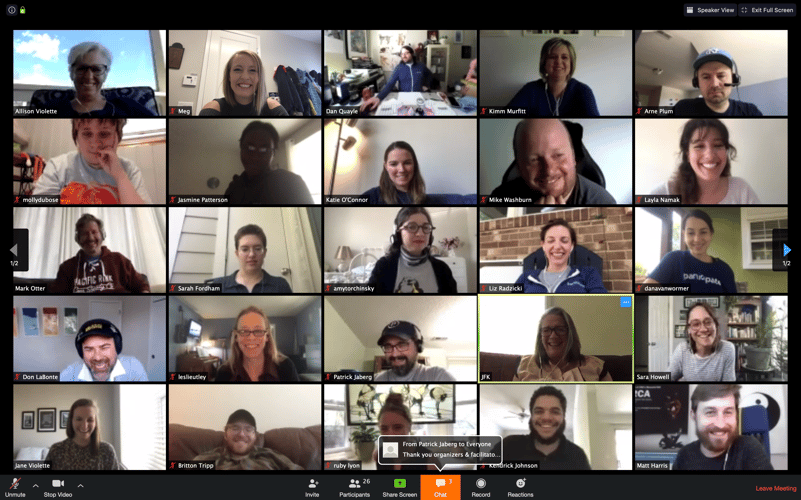 Zoom call from our virtual quarterly All Hands meeting
Zoom call from our virtual quarterly All Hands meeting
As an online learning platform and organization focused on providing virtual learning support, I’d like to think we have a fair understanding of online collaboration. But as we’ve all shifted to remote work, we’re continuously working toward and learning about the best ways to collaborate through online structures. It takes a lot of trust to build teams that work well together online, so here’s how we’re approaching it equitably.
“Collaboration is working to achieve something together that you couldn’t achieve apart. Bringing together the value of different brains and perspectives to achieve a result or go somewhere you can’t on your own.” - Sara Howell, Director of Customer Success
Trust and cross-departmental collaboration
In the fall of 2019, as we began to think through a new strategy plan and goals for our platform, we realized there needed to be some fundamental changes — both organizationally and technologically — for our organization to meet our goals. Traditionally, work on our platform lived solely in Development and Product teams, with monthly input from Customer Success and Sales teams on their experiences with users and prospects. To shift these siloed workflows into collaborative cross-departmental projects, we adopted a version of Spotify’s squad framework and Google Venture’s sprint structure. This was not a quick shift, and we’re not here to tell you we’ve got it all figured out; we’re still working through it to create a more robust platform.
To test how a squad framework could work for our organization, we loosely played with creating cross-functional teams to work on two major product updates: direct messaging and formative assessment. During this time, we organized design workshops and had staff members other than designers ideate solutions. There was a dedicated Slack channel for feedback and constant communication as we rolled out product updates. While this group was still made mostly of Product and Development teams, we started looking deeper into the squad and sprint templates we’d later iterate to make our own. What started as an organizational experiment quickly shifted into our company’s culture and everyday life.
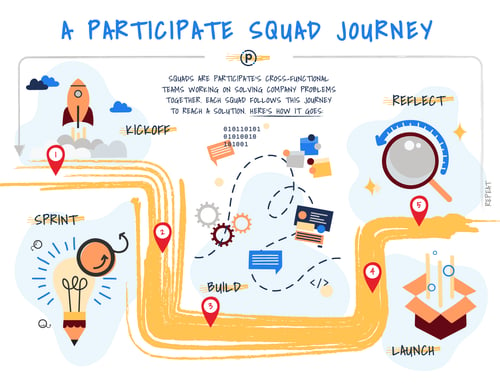 Illustration of our squad journey
Illustration of our squad journey
Developing squads on a foundation of DEI
Once we saw the potential of squads, we took a leap of faith in January 2020 and fully committed to using squads as our approach to product development. We broke down our strategy objectives into individual problem statements then assigned squad leads and squad members to each statement. But solely organizing cross-departmental groups wasn’t going to facilitate collaboration between staff members. We had already made a commitment to diversity, equity and inclusion (DEI), so we wanted to make that a priority in the way we approached squad work. To do this, we created an additional DEI squad that would simultaneously create resources and frameworks for how to collaborate better together in squads.
Hear from my colleague Liz Radzicki about the DEI squad’s purpose and vision:
The DEI squad took survey data from our DEI consulting firm, Feminuity, and considered the resources we would need to build equitable squads. They analyzed the data, looking for processes that would work for remote and office workers, acknowledge various team workflows and encourage flexibility and agency depending on staff member needs. From this synthesis, they created a suite of resources, including:
- Product and marketing accessibility checklists to evaluate the accessibility of new features.
- Inclusion preferences template for staff members to set expectations and preferences for individual communication.
- Squad health check tool to ensure the effectiveness and inclusivity of squads.
- Tough conversations learning experience so that company conversations are anchored in honesty, kindness and growth.
- Squad guide and squad lead journey resources with expectations and recommendations for inclusive squad work.
We’re just in the middle of our second round of squads, but we’ve seen organizational progress and collaboration in a way we didn’t anticipate. Problems are solved quicker, staff members enjoy a more focused workflow and our platform is improving daily.
Strengthening online collaboration
Our organizational shift wouldn’t have been as successful without a suite of resources and initiatives to amplify existing DEI squad work. Here are some tips to support your organization in strengthening online collaboration.
Using a community structure for asynchronous work and resources
Having an online community learning platform as a product encourages us to use our own platform for connection and collaboration. One way we go about online collaboration is through a community dedicated to Participate staff resources and information. Weekly All Hands meeting topics, DEI resources and learning experiences, our product roadmap, new hire guides, schedules for quarterly meetings, meeting recordings and our staff handbook can all be found in our organization’s online community. Rather than relying on various Google Drive folders and Slack channels, staff members are encouraged to use the community for asynchronous discussion forums and to post community announcements about exciting things happening within the organization. We wanted to meet staff members where they are — inside the platform — in a way that’s engaging to them. Consider the informal spaces your organization can leverage for resource sharing and discussions on areas of interest. Relying on tools outside of the traditional work communications of Slack and email can encourage fresh perspectives and engaging collaboration outside of the regular workflow.
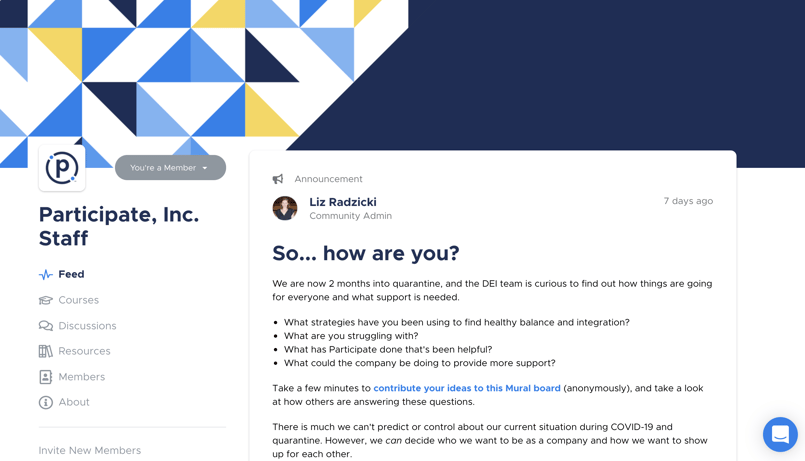 Image of Participate staff community feed
Image of Participate staff community feed
Employee recognition
Let’s face it, we could all use a little morale boost right about now. To demonstrate employee appreciation and transparency of work across teams, we started using Bonusly, a peer-to-peer, point-based employee rewards software. On Bonusly, staff members can grant their colleagues “bonuses” to show appreciation for the work they’re doing. Not only are these bonuses publicly shared for all staff members to see, but staff members can also add more points to these bonuses. Employees can cash in their earned points for various gift cards or make donations to charities of their choice. Our core values are also linked to hashtags used in bonuses so that we can demonstrate how we’re embodying these values. At the end of each quarter, we celebrate the top earners for each core value and share the top bonuses.
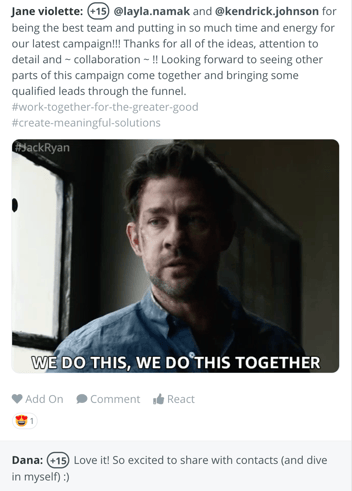
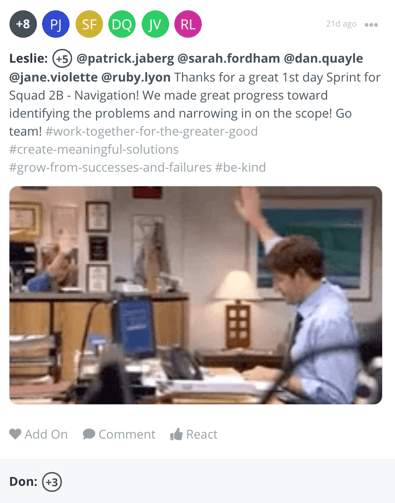
Examples of bonuses on Bonusly
Remote first
When we first launched as an organization, about one-third of staff were remote workers. As we grew and hired more staff members from around the country and beyond, that number grew to about one-half. And today, because of COVID-19, all of our employees are remote indefinitely. What has helped make this transition somewhat seamless was our remote first approach to meeting and collaboration. Regardless of being in the office or working from home before the outbreak, all staff members individually log into Zoom calls from their laptops. This way, all faces and voices are equally seen and heard. We don’t require but rather encourage staff to use their video cameras on calls so that it feels as though everyone is present.
While there isn’t a solution for replacing in-person interactions, look for the opportunities to build face-to-face connections and create humanistic touches. This can be as simple as adding in segues at the beginning of meetings or randomly assigning pairs for remote coffees each month. This could even be a fun game of “quarantine confessions” to share the humorous yet slightly embarrassing ways you’re adapting to working from home.
Weekly Team Ask Me Anything meeting
Each week before our company All Hands meeting, we host an informal “Ask Me Anything” meeting led by a specific team. These 30 minutes serve as a recurring time to learn more about a specific team's work or simply about the team. These semi-structured conversations provide an easier barrier to entry for staff members who may want to hang out with colleagues but don’t feel completely comfortable in unscripted virtual happy hours. These meetings are always 100% optional and a time for our organization to learn something new.
As we continue on our journey of working remotely, creating squads and discovering better ways to connect, we’ve learned that equity must be at the forefront of everything we do. Once we set the expectation of how everyone’s voice is heard and understood, then we can move into deeper online collaboration to create something better together. We’re still continuing to improve our squad structure and organization to be as equitable as possible, but for now, those smiling faces on Zoom tell me we’re moving in the right direction.
